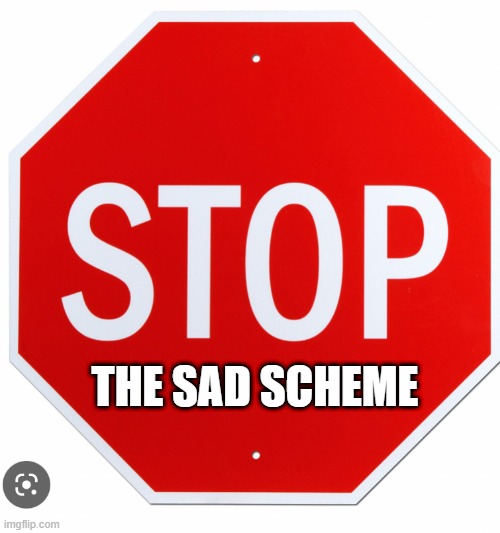A Judge Enumerates a SAD Scheme Plaintiff’s Multiple Abuses, But Still Won’t Award Sanctions–Jiangsu Huari Webbing Leather v. Schedule A Defendants
This is a SAD Scheme case. The plaintiff, Jiangsu Huari Webbing Leather, owns U.S. Patent No. 11,478,673 for an outdoor exercise product (“a rectangular-shaped buckle-and-belt mechanism, embodied in a Hanging Exercise Product that is sold online”). The plaintiff sued 163 defendants for online marketplace sales and got an ex parte TRO, including Amazon account freezes.
Then, the case fell apart. After a couple of defendants showed up, the judge denied a TRO extension because of the possible lack of merit in the plaintiff’s infringement allegations. When defendant Hyponix appeared, the plaintiff voluntarily dismissed them (without prejudice) and unfroze their Amazon account. The plaintiff eventually dismissed all of the defendants within 5 weeks of filing the complaint.
The court ruled on Hyponix and NinjaSafe’s requests for damages from the bond, dismissal with prejudice, and attorneys’ fees. The court pays out some of the bond but rejects the other relief. While the moving defendants got a tiny amount of compensation for their troubles, it’s hard to say the system fixed its mistakes.
* * *
Damages from the Bond
Wrongful Enjoinment. The court noted the deficiencies in the defendants’ alleged infringement. As a last-ditch argument, the plaintiff argued doctrine of equivalents. The court responds: “Plaintiff’s post hoc reliance on the doctrine suggests only that Plaintiff failed to adequately investigate Defendants’ alleged infringement before seeking a TRO; it does not establish that Defendants’ enjoinment was otherwise valid.” Invoking the doctrine of equivalents is usually a red flag that a plaintiff is overclaiming its patent.
Proximate Damage. The court awards the lost profits and labor costs incurred due to the Amazon account freeze, but no other collateral damages. This works out to $3,600 for Hyponix and nearly $15k for NinjaSafe. The court essentially uses up the $20k bond, leaving almost nothing for other defendants (as usual, the court doesn’t consider if any of the other defendants may be similarly situated).
Sanctions/Dismissal With Prejudice
“The Court is troubled by Plaintiff’s conduct in this case” and “aspects of Plaintiff’s conduct in this litigation suggest possible misconduct” because:
- “the ‘clear discrepancies’ between the protected elements of the ’673 Patent and the products of many of the parties against which Plaintiff secured a TRO…The Court listed dozens of other parties whose products, according to Plaintiff’s submissions plainly lacked elements of the ’673 Patent.”
- In a prior ruling, the court said it had “serious doubt . . . as to whether plaintiff and its counsel performed adequate investigation into the 163 defendants’ supposed infringement.”
- “Plaintiff represented that most of the 163 parties were difficult to find and contact. See ECF No. 6 at 8 (“Many defendants, if not all, have obfuscated their physical location on their respective Amazon storefronts.”); see ECF No. 5 at 4 (“[A]ddresses provided on the e-commerce stores indicate that the registrants are in China and other neighboring countries.”). In practice, however, contact information for many of the parties was readily available. Hyponix, for example, was a prior distributor for Plaintiff, so its information should have already been known to Plaintiff. In any event, the Court was easily able to locate Hyponix’s business address online, along with the addresses of several other parties. Plaintiff does not indicate that it tried with any diligence to locate these parties before seeking a TRO.”
- “Plaintiff’s timing in filing and dismissing its lawsuit suggests an improper purpose….Plaintiff’s delay in filing the TRO undercuts its supposed urgency, suggesting instead that Plaintiff timed its filing to sideline its competitors during a busy sales season. So too does the speed with which Plaintiff dismissed Hyponix from its case. The pace and prevalence of Plaintiff’s dismissals suggest to the Court that Plaintiff used Rule 41 as part of a broader strategy to freeze the accounts of its competitors, then withdraw its claim against any party that happened to object” (emphasis added).
- “Plaintiff disregarded the Court’s order by disclosing the TRO to four other companies besides Amazon. The TRO clearly stated that it applied only to Amazon.”
- “Plaintiff failed to provide Hyponix with documents necessary for its defense. In its TRO, the Court instructed that its order, Plaintiff’s complaint, ex parte TRO application, and supporting declarations would be sealed only until “Amazon restrains Defendants’ assets and accounts pertaining to the Infringing Products . . . or April 18, 2023.” Hyponix requested these documents after Amazon froze its account, but Plaintiff provided only a copy of certain website pages of Hyponix’s product. Without access to any of the other records that had been sealed, Defendants could neither ensure their compliance with the TRO nor respond to Plaintiff’s arguments in opposing its extension.”
This all sounds pretty sanctionable, right? Restating the court’s assessment, the plaintiff overclaimed its patent, didn’t adequately diligence the defendants, gamed its competitors, weaponized the ex parte TRO, and disregarded the court’s instructions to provide the materials necessary to fight a case when the key filings were all sealed and thus unchallengeable. Any one of these violations should be sanctionable; and collectively, the court ought to send a strong message to the plaintiff and its counsel that such misbehavior is impermissible.
Not so fast, says the court. “Despite these concerns, the Court does not lightly award sanctions and will not do so in this case.”
It would not be lightly awarding sanction when a plaintiff has committed so many violations. How much egregious abuse will the court tolerate before it thinks sanctions are justified???
The court explains:
Plaintiff holds a valid patent for its Hanging Exercise Product, its claim was colorable against at least some of the parties, and it dismissed its lawsuit voluntarily at a very early stage in the litigation (presumably in light of the issues raised by the Court at the order to show cause hearing), before any of the defendants responded to the Amended Complaint. Defendants here were made whole for their losses under the bond
 The references to other defendants are a non-sequitur. The only question on the table is whether the plaintiff’s conduct towards Hyponix and NinjaSafe is sanctionable. The fact that the other defendants haven’t requested sanctions, and in fact may have been infringing, is completely irrelevant. This is like saying that because a doctor properly diagnosed some of their patients, the doctor didn’t commit malpractice towards any improperly diagnosed patients. Here, there’s no question about the misdiagnoses. The court already enumerated a serious list of abuses directed towards the moving defendants.
The references to other defendants are a non-sequitur. The only question on the table is whether the plaintiff’s conduct towards Hyponix and NinjaSafe is sanctionable. The fact that the other defendants haven’t requested sanctions, and in fact may have been infringing, is completely irrelevant. This is like saying that because a doctor properly diagnosed some of their patients, the doctor didn’t commit malpractice towards any improperly diagnosed patients. Here, there’s no question about the misdiagnoses. The court already enumerated a serious list of abuses directed towards the moving defendants.
For purposes of this section of the opinion, the defendants are simply asking that the court dismiss the case with prejudice against them. The court’s basic response is that the plaintiff can continue to sue these defendants if it chooses. In other words, the plaintiff can completely abuse their litigation but get more chances. That’s unacceptable.
(Prof. Sarah Burstein has some similar comments in her Mastodon thread).
Attorneys’ Fees
The court rejects the patent statute’s fee shift because the plaintiff voluntarily dismissed the case. It’s extremely unfortunate when plaintiffs wreck defendants and can still avoid compensating them for their attorneys’ fees by voluntarily dismissing the case. This is a good example of how bond compensation did NOT make the defendants whole. The court doesn’t care.
Implications
Notice some of the questions the court didn’t ask:
- How much money did the plaintiff collect in settlements before voluntarily dismissing the case entirely, and how much did gaming its competitors at the online marketplaces temporarily increase the plaintiff’s profit? It’s entirely possible the SAD Scheme was lucrative despite the bond damages.
- Has the plaintiff filed other SAD Scheme cases, and did it commit similar abuses in those cases?
- How many other defendants in this case suffered from the same abuses the court identified, and what steps will be taken to remediate those abuses? (The short answer: if they never show, the court doesn’t care; and because the court won’t award attorneys’ fees, the harmed defendants won’t incur the costs to show up and make their case).
- Given the misrepresentations about the defendants’ identities, was jurisdiction appropriate?
- Was joinder appropriate? Patent cases have a narrowed basis for joinder, and it seems like the plaintiff couldn’t satisfy that.
In total, the plaintiff sued and froze the accounts of 163 defendants, many of whom probably weren’t infringing, and apparently did so to game some of its competitors. The plaintiff’s negative consequences so far is that it has to pay less than $20k out of its bond–and it can revive the lawsuit against numerous defendants, including Hyponix and NinjaSafe, any time it wants. Not exactly much disincentives for plaintiffs to keep shotgunning SAD Scheme lawsuits. #StopTheSADScheme
Case Citation: Jiangsu Huari Webbing Leather Co., Ltd. v. Schedule A Defendants, 1:23-cv-02605-JLR (S.D.N.Y. Jan. 2, 2024)
Prior Blog Posts on the SAD Scheme
- Why Online Marketplaces Don’t Do More to Combat the SAD Scheme–Squishmallows v. Alibaba
- SAD Scheme Cases Are Always Troubling–Betty’s Best v. Schedule A Defendants
- Judge Pushes Back on SAD Scheme Sealing Requests
- Roblox Sanctioned for SAD Scheme Abuse–Roblox v. Schedule A Defendants
- Now Available: the Published Version of My SAD Scheme Article
- In a SAD Scheme Case, Court Rejects Injunction Over “Emoji” Trademark
- Schedule A (SAD Scheme) Plaintiff Sanctioned for “Fraud on the Court”–Xped v. Respect the Look
- My Comments to the USPTO About the SAD Scheme and Anticounterfeiting/Antipiracy Efforts
- My New Article on Abusive “Schedule A” IP Lawsuits Will Likely Leave You Angry
- If the Word “Emoji” is a Protectable Trademark, What Happens Next?–Emoji GmbH v. Schedule A Defendants
- My Declaration Identifying Emoji Co. GmbH as a Possible Trademark Troll



